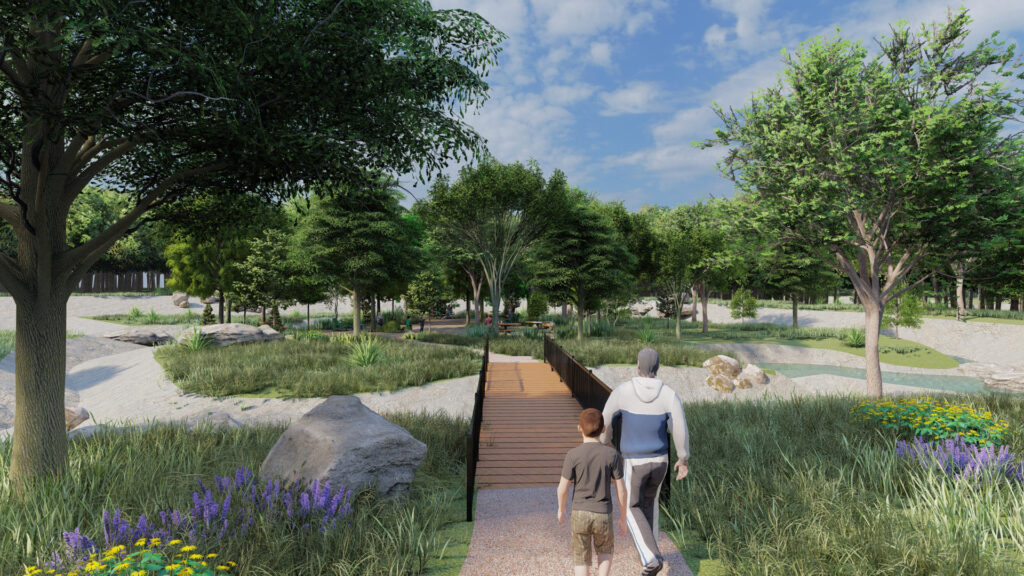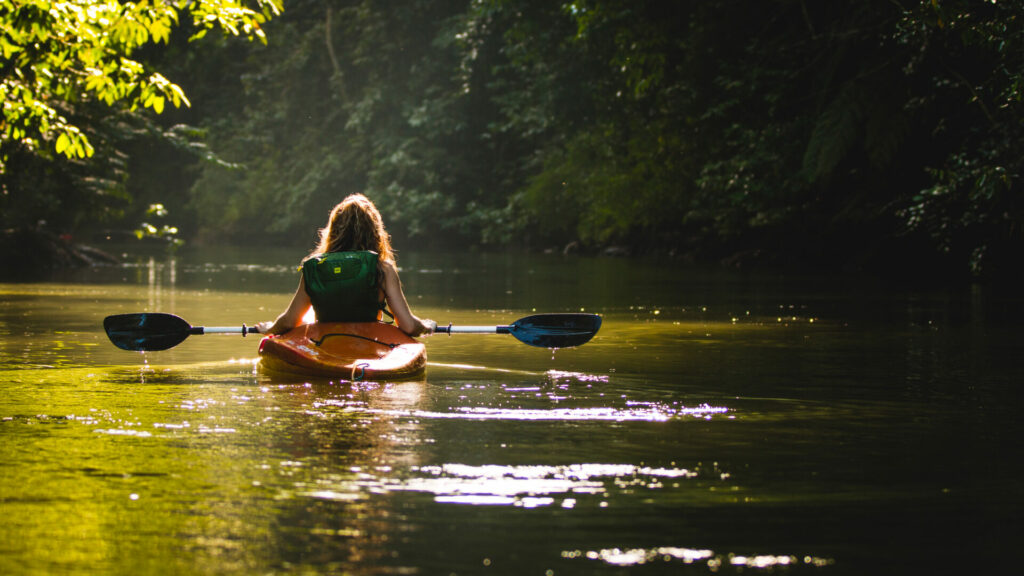Ready For a Nature Safari? The 5 Amazing Areas Around Lake Lavon!
Mother Nature must truly love the area near Lake Lavon, located just north of Dallas, and the home of Elevon, a new master-planned community. Why? This is one of the most ecologically diverse spaces in Texas and the southern United States. For residents of Elevon, this lovely landscape begins just outside their front door. Engineers, who are enforcers of accurate measurement, have recently reported that the trails found in Elevon will run a total of 8,52 miles! That’s a LOT of trails to walk or run. Plus, that’s only the beginning. Minutes from this amazing community is biodiversity, the likes of which most families have never seen.

A Nature Safari Around the Lavon Loop
Kids and adults who like to act like kids, love adventure. During the spring, summer, and fall, when temperatures are mild, it's fun to explore the natural paradise that is found in the area that is minutes from Elevon - The Lavon Loop.
According to the Texas Department of Parks and Wildlife (TDPW), this area is perfect for a nature safari, and this is an excellent way to teach young naturalists about the amazing birds, fish, wildlife, flowers, and trees that are found around Lake Lavon. Here’s a checklist for five sections of this terrain from the TDPW.
Let the safari begin!

Lake Lavon Trinity Trail
Lake Lavon Trinity Trail is located on the southwest portion of Lavon Lake, approximately 1 mile east of Wylie. The Trinity Trail is a 9-mile hiking and equestrian trail that follows the southwest edge of Lake Lavon from the trailhead near the intersection of CR 384 and CR 389 to Brockdale Park. The trail traverses a variety of habitats including lake, marsh, moist woodlands, open woodlands, and prairie.
A wildlife checklist is available from the Corps of Engineers office. Birds to look for include Common Loon, American White Pelican, Double-crested Cormorant, Tricolored Heron, Great Egret, Black-crowned Night-Heron, White-faced Ibis, Wood Duck, Marsh Wren, Cooper's and Ferruginous Hawks, Black-necked Stilt, Forster's Tern, Black-billed Cuckoo, Whip-poor-will, Belted and Green Kingfishers, woodpeckers, Willow Flycatcher, Loggerhead Shrike, Horned Lark, Red-breasted Nuthatch, Brown Creeper, Northern Waterthrush, and Common Yellowthroat.
Mammals documented around the lake include porcupine, fox, mink, river otter, bobcat, and black-tailed prairie dogs. Look for racers, kingsnakes, water snakes, and bullsnakes. In addition to the abundance of wildlife viewing opportunities that the Trinity Trail provides, Lake Lavon offers a variety of outdoor recreational opportunities.
For information on this area: (972) 442-3141
www.trinitytrailriders.org/trail-map
Rowlett Creek Greenbelt
This 350-acre site consists of open prairie and dense, moist riparian woodland. Colorful wildflowers such as Mexican hat, Indian blanket, black-eyed Susan, winecup, coneflower, and yarrow grow with a variety of grasses in the open prairie. A very large American elm tree shades a picnic area near the beginning of the trail, where you can watch open grassland birds such as Cliff Swallow, Scissor-tailed Flycatcher, and Western Kingbird. Look and listen for Indigo and Painted Buntings as you approach the wooded area.
The dominant trees in wooded areas include pecan, oak, American elm, and cottonwood. Understory plants include cedar elm, sugar hackberry, sycamore, and green ash. The trails move through many low-lying areas so be careful of flooding during heavy rains. This site is maintained by the Dallas Off Road Bicycle Association and is a favorite for off-road bicycling, so be sure to bring your bike when you visit.
For information on this area: (972) 205-2750
http://www.garlandtx.gov/facilities/facility/details/rowlettcreekpreserve-62
Spring Creek Park Preserve and Spring Creek Forest Preserve
Visitors can walk through the beautiful bottomland forest located in the floodplain of Spring Creek. This park, located on the edge of North Garland, has an overstory of chinquapin, bur, and Shumard oaks, some of them 100 - 300 years old. This rich habitat supports over 550 species of plants and animals. This area has large pecan, oak, and cottonwood trees with a relatively open understory of saplings, red mulberry, cedar elm, green ash, and eastern red cedar. Snails, lizards, and butterflies are common along the trail to Spring Creek. In summer look for common bird species such as Carolina Wren, Tufted Titmouse, Great Crested Flycatcher, Swainson's Hawk, and White-eyed Vireo. Watch for Olive-sided Flycatchers, Catbirds, Clay-colored Sparrows, and Blue-headed Vireo during migration.
The west side of Holford Rd. has a denser understory with unpaved, more primitive trails. This area offers solitude and excellent birdwatching opportunities. The sound of the running stream relaxes visitors sitting on benches beneath the dense tree canopy.
For information on this area: (972) 205-2750
www.springcreekforest.org
Arbor Hills Nature Preserve
The natural surface and concrete hiking and biking trails lead into the open woodlands and prairies characteristic of the park. The woodlands are dominated by cedar elm, bur oak, red oak, and eastern red cedar. Cottonwood, pecan, red mulberry, and black willow dominate the overstory while yaupon, Hercules club, sugar hackberry, black locust, and osage orange are common understory shrubs.
The stream provides habitat for a variety of birds including common birds such as the Blue Jay, Scissor-tailed Flycatcher, Carolina Wren, Blue-gray Gnatcatcher, Tufted Titmouse, and Carolina Chickadee, along with Gulf Fritillary, Giant Swallowtail and Monarch-mimicking Viceroy butterflies are common. A variety of damselflies and dragonflies also patrol the stream. This nature preserve offers many opportunities for outdoor activities and an escape from the bustle of the city.
For information on this area: (972) 941-7788
www.plano.gov/1397/Arbor-Hills-Nature-Preserve
Oak Point Park & Nature Preserve / Bob Woodruff Park
Oak Point Park and Nature Preserve is Plano's largest park encompassing 800 acres and lying within Texas’ Blackland Prairie ecoregion. The wide array of different plant communities is home to an abundance of butterflies, dragonflies, reptiles, amphibians, birds, and mammals, giving the park a uniquely rich biodiversity.
Listen for the loud-calling Red-shouldered Hawks that raise their broods here. At dusk, you can hear the calls of Barred, Great Horned, and Eastern Screech Owls. If you look carefully, you might see signs of bobcats, raccoons, beavers, and woodland reptiles.
The plants along the lake provide homes and feeding areas for aquatic wildlife and insects. You might see green tree frogs, native bees, and butterflies among the lakeside plants. Spring through fall, you will likely see red-eared sliders and river cooter turtles, or catch sight of a water snake. Come early in the morning to see hunting herons and egrets. At other times you can catch cormorants, gulls, American Coots, Belted Kingfishers, and a smattering of wild duck species, especially in winter.
Look for Red-Winged Blackbirds nesting amid the cattails in the drainage areas. From fall through spring, several species of sparrows can be found foraging on seeds in the prairies and meadows. The arrival of Dickcissels in spring brings the incessant and unmistakable surge of singing as the males declare their breeding territories in the prairie and set about attracting mates. If you linger until dusk, you may hear the yips and howls of coyotes.
The long expanse of edge habitat at the bottom of the hill separates the woodland from the prairies and is teeming with life. During seasonal bird migration, this is a good place to observe warblers as they pass through on their way north.
Bob Woodruff Park North and South are 240 acres of riparian woodland with soft surface trails along Rowlett Creek, two spacious parkland areas with picnic tables amid old pecan and oak groves, and a large pond friendly to wild ducks, herons, egrets, and turtles. A “low mow” conservation buffer zone separates the woodland from the park’s mown areas, providing cover and forage for birds, reptiles, mammals, and many interesting insects.
For information on this area: (972) 941-7250
https://plano.gov/1476/Oak-Point-Park-Nature-Preserve
Surround Yourself with Nature
The master-planned community of Elevon is in the heart of spectacular biodiversity and every season reveals more colors, sounds, and glorious light. To learn more about our plans to celebrate nature at its best, schedule a visit. Just click here, and don’t forget to bring your binoculars.
